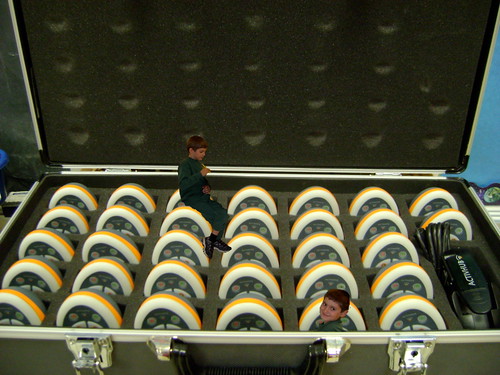Did You Know 4.0
I decided to use the Did You Know 4.0 video by XPLANE as the basis for our discussion. I always gain interesting insights when we have Chatzy discussions. This weekend, before the chat, I prepared questions that I wanted to ask at the start of the discussion and at various points throughout the short (less than five minute) video. The entire class took a full 42 minute period.
Room Etiquette
We did a quick review of room etiquette as we have already used the Chatzy room twice. The short list goes as follows:
1. You must sign on with your first name (last initial is only required if we have two or more matching first names).
2. If you sign in with a different name, you must leave the chat room and re-enter with your proper name.
3. Stay on target in the discussions. Save private jokes and messages for your online chats at home.
4. Do not type repetitive characters. As an aside, I don't know why, but students like to add messages like "aaaaaaaaaaaaaaaaaaaaaaaaaaaaaaaaa". I explained that I paid for the chat room and I'm charged by the character.
5. I enter each question preceded by Q and a number. They respond with Q the same number and their answer so I can easily look at the chat later and know what question was being answered.
Question One
Q1. What do you know about the Google Book Search scanner or Google Books?
A few of the students answered with responses such as it finds books, Google lets you preview pages in books, it's all about books and reading, it makes books more available, and it lets you buy books. There were a number of "I don't know" responses, as well.
At the twenty-two second mark in the video, they talk about how a Google Book Search scanner can digitize 1,000 pages an hour. I couldn't find any video specifically titled as a Google Book Search scanner, but I did find a YouTube video of a Kirtas APT 2400 book scanner digitizing a book which worked for my purposes.
Question Two and Three
Q2. What do you watch more of TV shows or YouTube videos?
Here the room was split between TV and both evenly.
Q3. Has anyone in the room every been Rickrolled? I haven't.
Again, the answers were split in half. I had never really even heard of this until seeing the Did You Know video. The answers to the affirmative were actually pretty funny and ranged from "so much *shutter shutter*" to "every time something is good on YouTube he shows up". We ended up watching the Rick Astley, "Never Gonna Give You Up," video at the end of class.
Question Four
Q4. How many text messages do you think the average American teen sends each month?
Their guesses were in the one to four thousand range with some discussion of whether there was a difference between the amount boys and girls sent. The video claims 2,272 - so they were in the ball park with their guesses.
It talks about the fastest text message. It's one thing to read about it, but I found an interesting three-minute YouTube clip of James Trusler trying to break the record on a Guinness World Record show. It was interesting to see him try to type "The razor-toothed piranhas of the genera Serrasalmus and Pygocentrus are the most ferocious freshwater fish in the world. In reality they seldom attack a human." It must be on a commercially available cell phone, completed without the use of predictive texting technology, all punctuation, capitalization, and error-free.
Overall
They felt the text went a little too quickly on the screen. I told them I would bookmark the video on my Schoolnotes page.
Closing the Class
We left the Chatzy room and returned to the chairs in the center of the room. I took them on a brief tour of LIFE Magazine on Google Books. I told them they might find it useful in the remainder of grammar school and into high school as a source document. If they were writing a paper about the death of President John F Kennedy, they could search the LIFE Magazine by decade. Slide down to November of 1963 and bring up the actual magazine. We flipped past old ads and I zoomed in on the article.
We took a quick peek at Alice in Wonderland, pausing to look at some illustrations, and the Harvard College Library book stamp.
It was a very good class. I'm going to repeat it for the other seventh grade and my two eighth grade classes this week.





